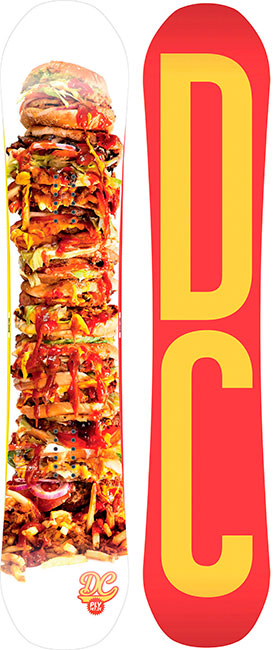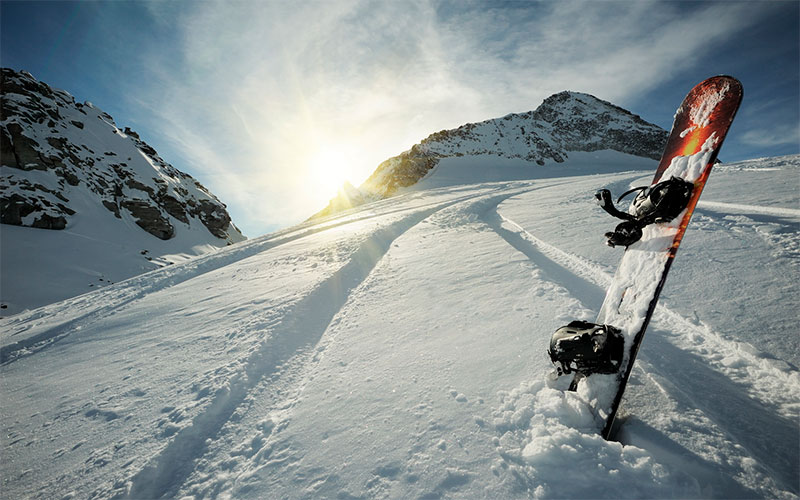Snowboarding recently entered into the program of the Olympic Games, which confirmed the high status and popularity of this sport. Thousands of people, especially among young people, choose him. This is explained by the fact that it is rather unusual, bright, unique in its own way, extreme and allows a person to express himself from the creative side, learning and demonstrating various tricks. It is clear that the snowboard begins with the selection of equipment, where the main place is given to the board, directly on which the athlete will ride. There are many significant nuances needed to buy a snowboard, but not every even one of the upgrading riders knows about them. We have prepared a material that will help determine the choice presented on the shelves without making mistakes.

Content:
The best manufacturers of snowboards - which company to choose
Currently there is no shortage of manufacturers engaged in the manufacture and production of snowboards. Firms are located everywhere in the world: in Russia, America, Australia, China and many European countries. All companies are united in the love of this sporting look, as well as in-depth study of technology, the introduction of innovations and the desire to please the most diverse categories of riders as best as possible.
Brands are usually run by top snowboarders who know the sphere from the inside. But even in these cases, consultations are taken from professionals and experts to achieve the highest level of quality.
The industry leaders are units, as there is fierce competition in the market.
For anyone who cannot devote time to studying the article, we have prepared a list of the most sought-after brands:
1. Lib tech
2. GNU
3. Never summer
4. Burton
5. Vans
Production of boards is the most complicated process that requires a lot of not only theoretical, but also experimental work. Each product is tested on existing tracks, for example, in alpine. They are tested with various conditions and on several types of snow cover, while trying all the styles of riding. The products of the above companies are trustworthy, so you can safely go shopping.
If you are looking for a specific model now, then go to our ranking of the best snowboards.
The principle of operation and the device snowboard

Snowboard is a special board designed for high-speed rolling off a snow slope of any height. Visually, it is a flat base with special curved ends. The product consists of a plastic and smooth surface in contact with a snow cover, a base with fastenings for shoes and a side edge made of metal.
Slithering speed. The price of the board also depends on the material it is made of.
The lid is laminated and almost always painted on it. Matte cover options are more practical, they are not as visible damage as the glossy ones. With minor breakdowns repair is not required, since this part of the snowboard does not affect the performance.
Kanty need for improved grip while making a turn or other maneuvers, they are used to control the snowboard. They must be sufficiently pointed, so periodically they are sharpened.
Mortgage designed for fasteners. The more of them will be, the more accurate the athlete will adjust the position of the legs for the rack.
Types of snowboards
Carving

Such snowboards are designed for descents along solid prepared tracks.While rolling, the athlete uses the entire surface of the slope and rides in wide arcs. Boards are significantly different from the standard, which are more familiar. The flat tail is cut off, the pointed nose is bent, and the fastenings, made in the form of metal frames, are equipped with rigid, ski-like, plastic shoes.
Advantages:
- increased stiffness;
- large turning radius;
- give excellent control in maneuvers;
- develop high speed.
Disadvantages:
- not suitable for skiing in the park and on virgin soil;
- designed exclusively for professionals;
- high cost.
For freeride

This snowboard is designed to roll on virgin soil using jumps and wide arcs. It is characterized by high speed and ability to use the existing terrain. Suitable for descents off-piste, because as such virgin soil is difficult to find.
If they move a few dozen times from the mountain, the cover is compacted. It behaves perfectly when driving between trees, along ski lifts, on glaciers, while passing through various obstacles, etc. This board is uniquely for thrill-seekers.
Have a waist of greater width, allowing not to sink in soft snow; medium hardness for holding the arc; suitable cross for narrow places and reverse deflection so that the nose does not dip into the snow. Snowboard up to about 7 cm above normal.
Advantages:
- resilience;
- confident progress on different routes;
- Works with any type of snow cover.
Disadvantages:
- there may not be enough depreciation at high speed;
- because of the stiffness less comfortable.
For freestyle

On such boards they ride exclusively in special parks that are made for this. The projectile is symmetrical and has maneuverability, since in this style there are many tricks and jumps. In such a snowboard, the elasticity is higher than usual, the stiffness is average, the turning radius is small.
For jumping from the springboard (Big Air) you need a product with a complex side cut. To roll along the groove (half-pipe) you also need a non-standard side cut-out in order for the control to be the best. For riding along the railing (jibbing) - a soft tail with a nose, but a hard core, as well as a small length and a large waist in width.
Advantages:
- reinforced mounts;
- high strength.
Disadvantages:
- jibbing quickly spoils the board;
- snowboards for springboards are the most expensive.
Universal

Universal class snowboards are ideal for athletes who have recently begun to master the board. This is a compromise option that allows you to do a bit of everything.
Well behaved both on the prepared tracks, and on virgin soil. They have an average radius and stiffness, have a narrow waist. Such projectiles do not require sophisticated equipment from the user.
Advantages:
- universality;
- practicality;
- suitable for beginners;
- acceptable cost.
Disadvantages:
- will not reveal any particular riding style.
Snowboard selection options

Length and width
Carving and universal boards make sure you choose about 10 cm shorter than a person who is rolling a height of about 10 cm. To do this, you just need to put the product in front of you: the tip should be at the level of the chin or nose.
Engaged in freestyle or freeride, you need to buy a snowboard that is only 5-7 cm shorter than a person. They are less long and thin, take 2-3 cm longer and longer, then you should add as much.
In width there are four categories: standard and medium (waist 250-260 cm), narrow (waist up to 250 cm) and wide (waist from 260). Pick this parameter depending on the size of the foot.
Often companies develop their own tables, according to which you can easily navigate. They can be on the site or even on the shell itself, its packaging.
Materials
Please note that the core is usually made of wood with the possible addition of other elements:
1. Poplar, oak, beech, spruce, pine, ash serve for excellent impact resistance and resistance to vibrations.
2. Wood with admixture of foam makes it lighter and reduces the cost of the product. But such boards withstand vibration loads and are less resilient.
3. Wood with aluminum and carbon makes snowboarding light and tough. Manufacturers are constantly experimenting with combinations.
For the sliding surface use one of three materials:
1. Pressed polyethylene is characterized by low cost, does not need expensive repairs and special care. Loses in speed.
2. Sintered polyethylene has a porous structure that perfectly absorbs a special ointment. From this surface slides better, not afraid of ice chips and minor damage, scratches. After five rolls, an update of the paraffin coating layer is required.
3. Graphite is the highest material at the price, but at the same time durable and fast. It is highlighted in black, found in top models for professional riders.
Deflection
There are four types:
1. Rocker
Suitable for beginners. Board with curved ends, in the central part comes to the ground. This form of the arc facilitates the process of mastering snowboarding, since, thanks to the reference point, it becomes more docile and controllable, turning around behind the athlete during body movements. Best used in freestyle and freeride.
2. Classical
Unlike the first, the center is raised. Rider weight is evenly distributed throughout the projectile. To study the board is too difficult, because you need a good knowledge of technology.
3. Null
Smooth center, the ends lifted above the ground. Particularly like similar products to freestylers. Allows you to ride relaxed and uncritically responds to mistakes. You can also advise the board for beginners.
4. Combining
The combination of bends increases the desired characteristics of the snowboard. This may be handling, speed, maneuverability, and more.
Which snowboard to choose

1. Choose carving snowboards for professional riding on hard prepared tracks.
2. Freeride boards should be purchased by people who own the technique of descent through deep snow.
3. Freestyle equipment can be designed for both beginners and pros. Choose them to ride in specially equipped parks.
4. Universal products are best bought for beginners.
5. It is desirable to prefer full snowboards slightly increased in length, and thin ones shortened.
6. Freestyle and freeride classes will require a board shorter by 5 - 7 cm. Carving and wagon should be shorter by 10 cm.
7. The wood core is resistant to shocks and vibrations; with admixture of foam - light weight, but in speed shows the worst result; In addition to lightness, combinations of wood and aluminum give rigidity.
8. We recommend choosing a sliding surface of extruded polyethylene, as this is the best option for the price and quality. Sintered should be discarded due to impracticality.
9. Graphite surfaces are the best in all respects, but expensive.
10. Deflection "rocker" and "zero" is suitable for freestyle, as well as for beginners; classic requires possession of technology; combined allows you to increase a certain characteristic.
How much is snowboarding

1. The initial category includes boards costing from 8 to 15 thousand rubles. This may include any destination snowboards.
2. Products for cultivators will be slightly more expensive, from 18 to 25 thousand rubles, and have improved parameters.
3. For confident users, the shells will cost at least 30–45 thousand rubles.
4. Boards with characteristics for professional craftsmen cost from 50 thousand rubles.
5. Custom snowboards can have a price tag of 150 thousand rubles and more.
It will be interesting to friends too







